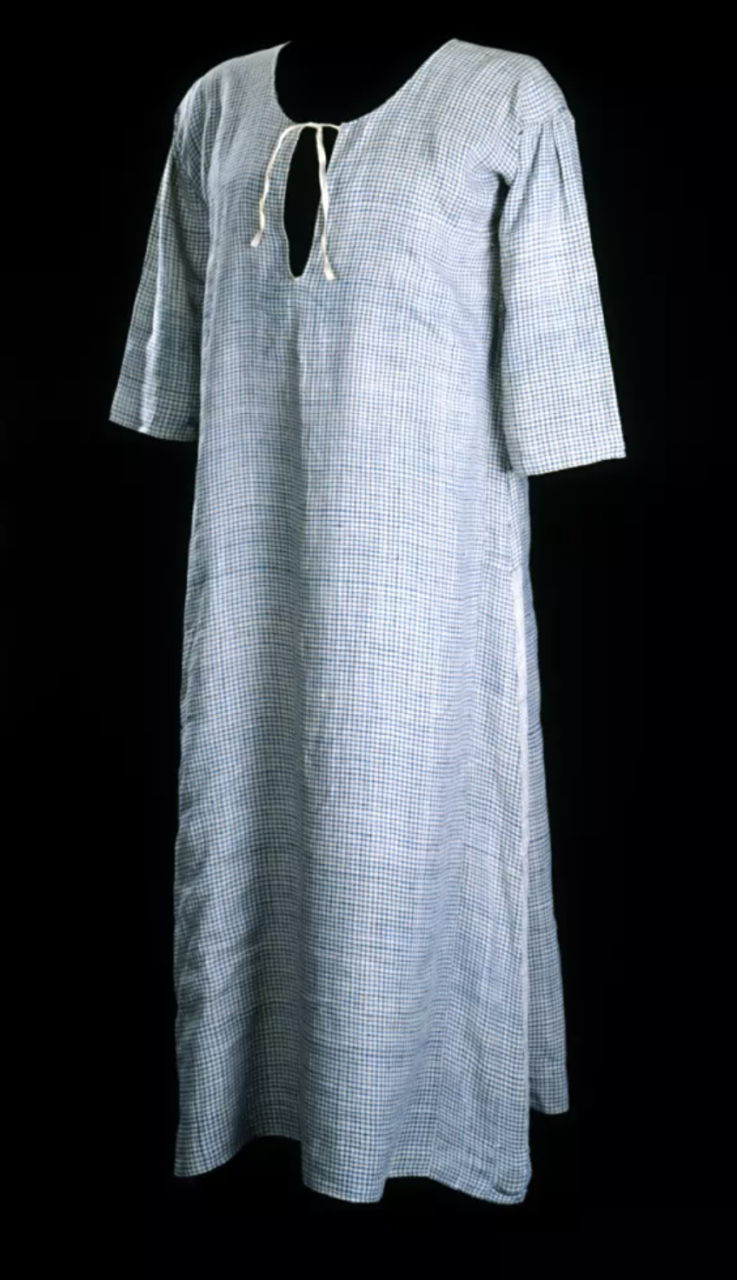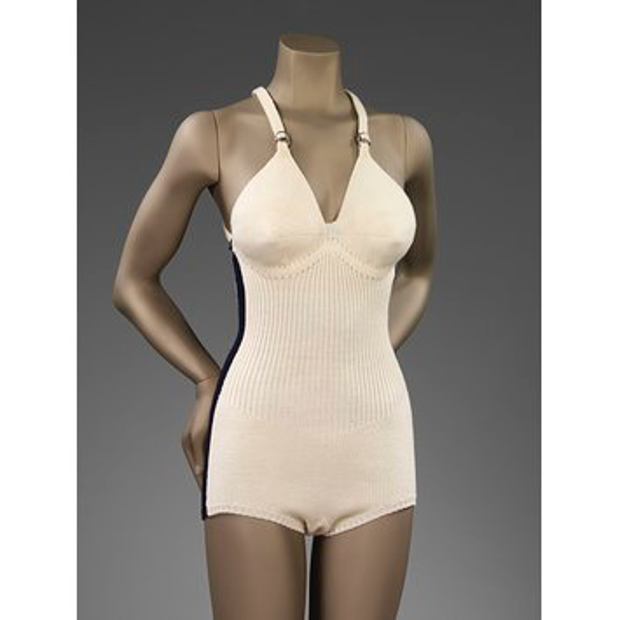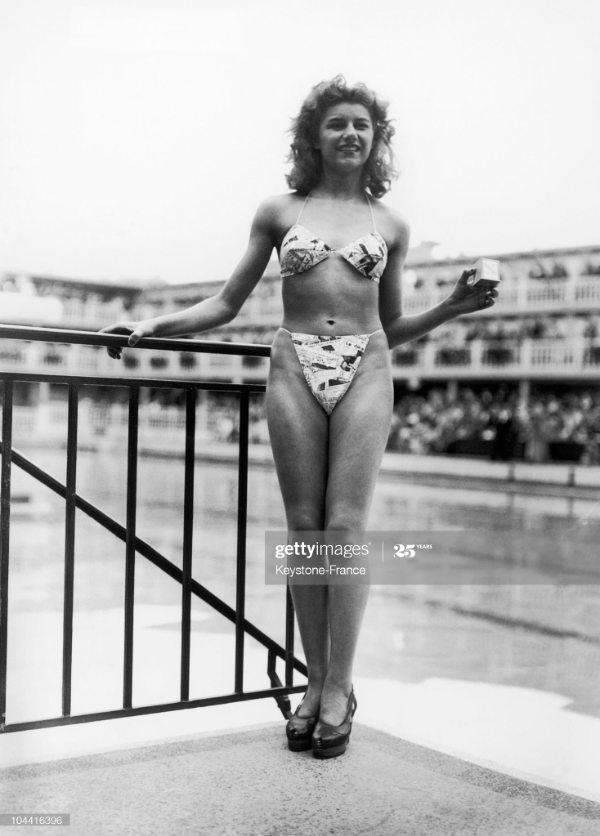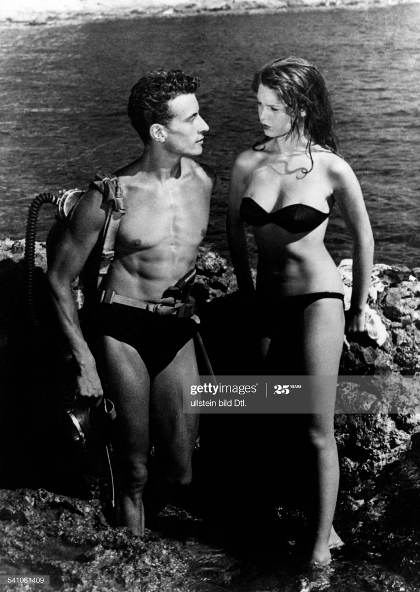From the 18th century to today, it is not a big news that there has been an unparalleled transformation in women swimwear. There could be hundreds of pages to write, but no worry, I'm not going to do that.
Let's talk about the big evolutions of woman swimwears through history
We find one of the first trace of bathing suit ( we can't talk about bikini yet) is in the 18th century, when sea bathing became a popular recreational activity. It was believed that there were considerable health benefits to bathing in the sea, and it was encouraged for both women and men. Don't be too excited as immersing yourself completely was discouraged, especially for women as activity in water was not seen as sufficiently feminine. For bathing, women would wear loose, open gowns, that were similar to the picture below.

In the 19th century, the recreational aquatic activities became more and more popular and surpassed the desire to bathe for health benefits only. Logically, the loose-fitting chemise gowns worn in the previous century became increasingly fitted and more complex.
Still, the number one priority for women who took part in water-based activities was to maintain their modesty. Don't imagine for a second that these women husbands would let their wives reveal any part of their body. Bathing outfits would consist of a bathing dress with long sleeves, high-necks drawers and stockings, often made of wool or cotton. Women often wore belts at the waist to replicate the popular silhouette of the time and bloomer-like trousers under the bathing suit to maintain their modesty.. It wasn't very much handy in the water and was very very heavy while wet. Thus, woman went in the water only to bathe or to paddle ( of course doing vigorous activity wasn't much high considered at this time).
Clearly, it shows that women’s swimwear, which prohibited ease of movement in water, reflected and maintained the social and physical constraints on women in nineteenth-century patriarchal society.

It is obvious to say that during the twentieth century, women’s swimwear went into significant transformations as a result of the material advancements and increasingly liberal fashion trends.
It all started with swimming as a sport in the early 19th century. However, its popularity was not solidified until its first appearance at the Olympic Games in 1896. Women were permitted to compete in swimming for the first time at the 1912 Olympics. Annette Kellerman, a swimmer from Australia with the cute nickname of the "Australian Mermaid", can be credited for shifting social attitudes towards acceptance of female participation in swimming and beginning the modernization of female swimwear.
In 1905, Annette Kellerman was invited to perform in front of the British Royal Family, however her swimsuit was prohibited as it was tight-fitting and revealed the lower half of her legs. Kellerman refused to compete in an inconvenient and ill-fitting garment which would meet their modesty standards, so she instead sewed black stockings onto her swimsuit (see picture below). We could say that Kellerman’s action may have had a liberating effect on female swimwear, but unfortunately, it still led to a crackdown on female immodesty in some parts of the world, with police working to enforce strict clothing conduct policies.

In 1913, the vision of swimwear's started to evolve as Carl Jantzen, who participated in the 1900's Olympics edition, debuts a two-piece bathing costume aimed at improving the swimming performance. It’s really just shorts on the bottom and a T-shirt on the top, but it is tight-fitting enough to get tongues wagging. It is only in 1921 that the word swimsuit started to appear in the vocabulary. You can clearly see the changes and the evolution down below in the picture down below.

Between the two Word Wars, knitted swimwear's started to spread within Europe and especially in America and bathing suits were already history. American women wore a practical and sporty look whilst European women opted for sleeker swimsuits which cut closely to the body. Another major difference between the two fashion trends was that women’s swimsuit fashions were accessible to a very large middle class in America, whereas in Europe there were clear much more class divisions and not all the woman could afford to buy a swimwear. Both sides of the Atlantic were still favoring the one piece.
There were improvements but of course, there were also some drawbacks, mostly on the fabric of the garment. Indeed, the knitted swimsuits tended to become misshapen when wet. The fabric absorbed a great deal of water resulting in the elongation and sagging of the swimsuit. Consequently, these issues often jeopardised the modesty of the women’s swimsuits which concerned inter-war society ( remember babes, we are still in 1930's).
Major designers like Coco Chanel started to do one piece swimwears also.
 One Piece swimsuit in the 1930's
One Piece swimsuit in the 1930's
The 1940's is definitely the decade where everything shifted drastically. While the bikini is usually credited to 2 French creators, I would like to mention the Australian fashion designer Paula Stafford who was making them for herself in the late1930s to wear on the Gold Coast. When a woman asks to buy one, she begins selling her newfangled two-pieces from The Tog Shop.
And now, it is time to reveal why a swimsuit is called bikini. Maybe, a few of you babes know the origin of this word :) It was only invented in 1946.
But first of all, in May 1946, Parisian fashion designer Jacques Heim, who owned a beach boutique in the French Riviera in Nice, starts producing the “Atome”—the world’s smallest swimsuit—. Named after the tiniest particle of matter, the minimalist design featured a bra top and a bottom which just covers the navel, but barely.
The following month, French engineer Louis Réard (yes an engineer, not a designer) responds with his own swimsuit. Made from four triangles of fabric measuring a total of 194cm on string, it’s named after Bikini Atoll, the Pacific Ocean site of atomic bomb tests. The term of bikini is now invented and the "commercial war" between the 2 French men will go on and on in order to get the biggest part of this fast growing market. We can say that Heim’s garment was the first to be worn on a beach, it was the term bikini, as invented by Réard, that stuck in people's mind ( marketing you said??)
 Bikini by Louis Réard
Bikini by Louis Réard
Following this, the first Miss World contest takes place but beaches in Europe and Australia ban the bikinis due to public indecency. The Vatican also have an opinion and simply declare it sinful. Louis Réard is still very famous and launches an aggressive and iconic ad campaign saying it’s not a real bikini “unless it could be pulled through a wedding ring”.
It will be the rise of the film industry and Hollywood glamour in the 1950's, which celebrated the female form in its entirety, that had a huge and decisive impact on the swimwear industry.
The French iconic actress Brigitte Bardot was amongst the first to wear this apparel on the big screen. In 1952, at just 17, she starred in the French film Manina, The Girl in the Bikini. (see picture below). Brigitte Bardot makes also quite an impression at the 1953 Cannes Film Festival, photographed wearing a floral bikini on the beach, even if there were still people not that enthusiastic. Modern Girl magazine writes for example: “It is hardly necessary to waste words over the so-called bikini since it is inconceivable that any girl with tact and decency would ever wear such a thing.” The magazine was quite wrong, wasn't it??

Designers continued to experiment with swimwear throughout the second half of the 20th century, with the iconic Emanuel Ungaro, André Courrѐges, Giorgio Armani, Oscar de la Renta and Calvin Klein who all started selling ready-to-wear swimwear in the 1960s (and many more).
Bikinis simply become paparazzi bait for Hollywood stars from Marilyn Monroe to Betty Grable, and it was simply a game of the actress showing off a new bikini, a new color, a new shape.
In 1960, Bryan Hyland releases his cheesy yet infectious hit single, Itsy Bitsy Teenie Weenie Yellow Polka Dot Bikini and sparks a bikini buying binge ( type it on Youtube, I'm sure you know the song ;) ).
There are simply too many iconic bikinis in the movies at this time, and it would be too long (and boring) to list them all. One of the most memorable is without contest the belted white bikini worn by Ursula Andress in the James Bond movie Dr. No in 1962.

In the 1980's and not before, the G-string starts to appear. And guess where...?? In Brazil of course!!
In 1989, the iconic Baywatch is aired on screen (iconic for the swimsuits and not the quality). However, this style of swimwear re-popularised the one-piece in this new shape.
The extravaganza went on and on (and is still going on). I just want to cite 2 examples of pure craziness. In 2001, Kristy Hinze made quite a show with in a $5 million diamond-encrusted Tigerlily bikini, and a live diamond python wrapped around her neck. In 2006, the world’s most expensive bikini, designed by Susan Rosen and made up of over 150 carats of diamonds, is worth a reported 30 million US dollars.

Since the 2000s, many female swimwear trends from the 20th century are being revisited due to the cyclical nature of fashion. 1950s one-pieces, high-cut Baywatch swimwear and itsy-bitsy teeny-weeny bikinis will often be spotted on the same beach. Women’s swimwear continues to be more than just a functional garment, it must also be fashionable. Something that is new in female swimwear in the 21st century is swimwear brands being more inclusive of female sizing. The pressure to look a certain way when poolside is slowly decreasing. Whilst the 20th century was meant to eradicate laws controlling women’s modesty, perhaps the 21st century will be the era when women’s swimwear becomes inclusive for all.
Brand like ours are more and more transparent on all part of our process and it is of course a good sign even if you can always do better for sure.
Thank you for reading this blog, and don't hesitate to tell me your thoughts in the comments below.
What is your iconic bikini? How do you judge this evolution through the past 250 years?
We can't wait to hear from you :)
With love xx
Aisyah